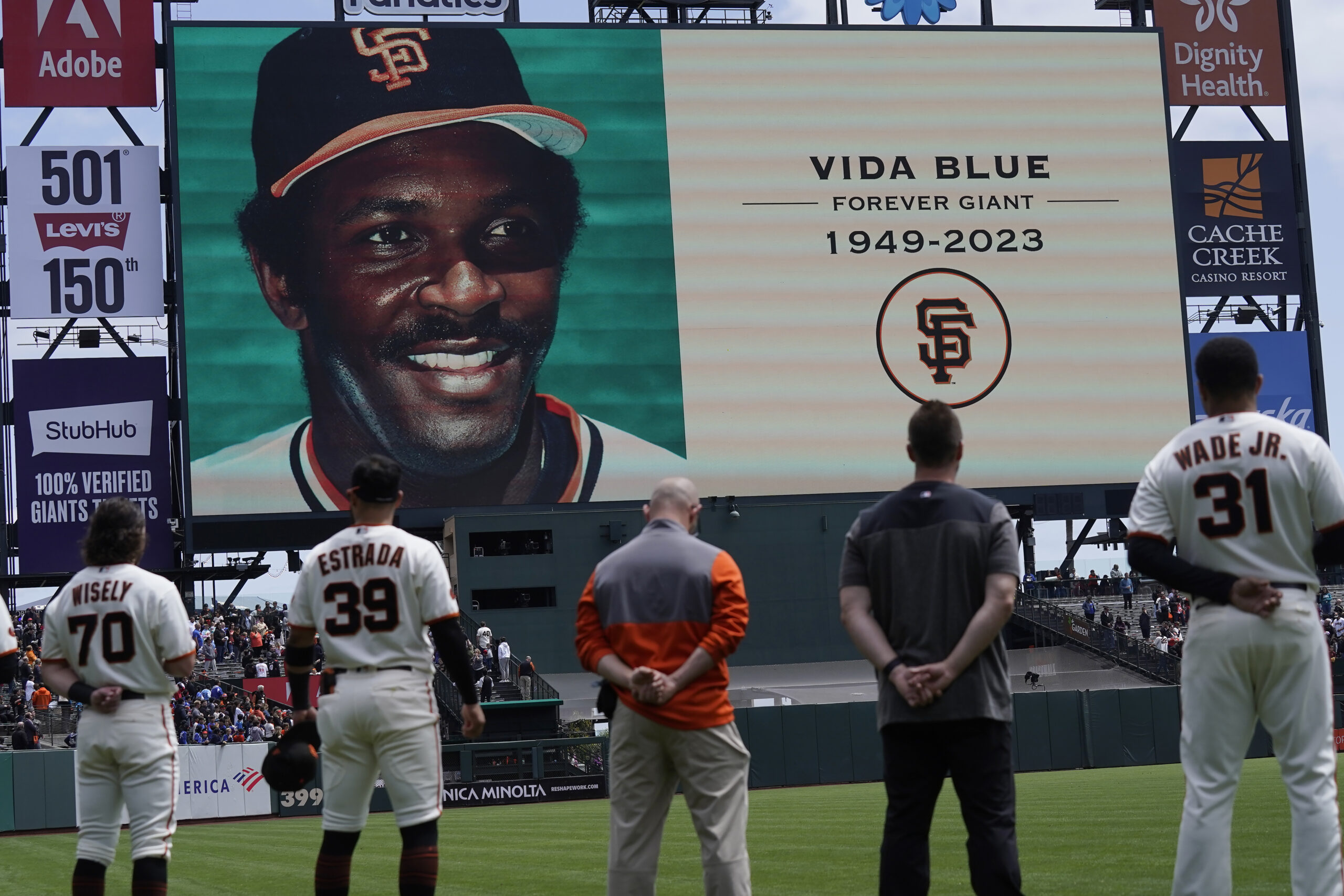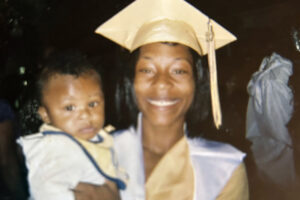Vida Blue, the dynamic left-handed pitcher who starred for both the Oakland Athletics and San Francisco Giants in a prolific and tumultuous career, has died, his family and the A’s announced in a statement Sunday. He was 73.
Blue won 209 games and made six All-Star teams in 17 MLB seasons. He won the American League MVP and Cy Young awards in 1971 and won three World Series championships with the A’s from 1972 to ’74.

Blue had been battling unspecified health issues. In April, he attended the A’s reunion of their 1973 World Series championship team at the Coliseum, where he declined to discuss his health but was in good spirits recalling his playing days on both sides of the Bay.
“I say there are A’s fans, Giants fans and Vida Blue fans,” Blue said that day. “So I don’t know, I got lucky, I guess.”
In a statement, the A’s said: “There are few players with a more decorated career than Vida Blue. … Vida will always be a franchise legend and a friend.”
With a high leg kick and powerful fastball, Blue was a key member of the “Swingin’ A’s” dynasty, posting three 20-win seasons during Oakland’s run of five consecutive AL West titles from 1971 to ’75.
Blue later pitched for the Giants and Royals and retired with a 209-161 record and 3.27 ERA. He started All-Star Games in both leagues – the first pitcher to do so – even amid off-the-field issues that impacted his career and later, he believed, his chances at the Hall of Fame.
Just 19 when he debuted in 1969, Blue made a splash when the A’s called him up again in late 1970. He threw a one-hit shutout against the Royals in his second outing that season. Ten days later, Blue fired a no-hitter against the Twins, the seventh in A’s franchise history.
In 1971, Blue authored one of major-league pitching’s all-time great seasons. He went 24-8 with a 1.82 ERA, eight shutouts and 24 complete games in 39 starts. He totaled 301 strikeouts in 312 innings and became the youngest player named AL MVP in the 20th century.
“It’s unbelievable, the stuff that he had,” former A’s and Hall of Fame reliever Rollie Fingers told MLB Network in 2018. “I would go down to the bullpen and watch him warm up before the ballgame (and) walk back to the dugout and go boys, ‘Hey, game’s over. He’s got his stuff on. He’s not going to give up any runs today.’”
That season made Blue a national sensation. He appeared on the covers of Time and Sports Illustrated magazines and was a top box office draw around the league. But it also set the stage for a contentious contract dispute with then-A’s owner Charlie Finley that spilled over into the following season.
Blue made a salary of about $14,500 in 1971 – which then-President Richard Nixon said he “must be the most underpaid player in the game” – and held out in spring 1972 when the stingy Finley would not meet his request for a raise.
Blue settled with the A’s in May for a reported $63,000 but said at the time that Finley had “soured my stomach for baseball. … I’ll never forget that he treated me like a damn colored boy.”
“It changed my attitude about the game,” Blue, who briefly said he’d leave baseball during his holdout, told The Chronicle in 2019. “I never recovered totally, mentally, what the game meant to me.”
Blue went 6-10 in 1972 and pitched mainly in relief in the playoffs as the A’s won the first of their three straight championships. But he helped anchor Oakland’s pitching staffs in ensuing seasons, going 91-67 with a 3.13 ERA and three top-six Cy Young finishes from 1973 to ’77.
Sal Bando, the third baseman and captain of those A’s teams, told Sports Illustrated in 1973 that where Blue was “overpowering” hitters in 1971: “Now he is overmatching them. … He has learned that he can get people out without throwing hard all the time.”
Though Blue could still dial up a fastball, he never again matched the gaudy strikeout totals of his MVP year. Nor did he thrive in the postseason, outside of a two-hit shutout of the Orioles in Game 3 of the 1974 ALCS, compiling a 1-5 record and 4.31 ERA across 17 postseason outings for Oakland.
Blue went 22-11 in 1975 and was part of another no-hitter in the final game of that season, combining with three other A’s pitchers – Glenn Abbott, Paul Lindblad and Fingers – to blank the Angels. Blue pitched the first five innings of what was at the time just the third combined no-hitter in MLB history.
In 1976, Finley tried to sell Blue to the Yankees and Fingers and Joe Rudi to the Red Sox, but then-MLB Commissioner Bowie Kuhn negated the deals. Finley, who had once tried to pay Blue to change his first name to “True,” then tried to send Blue to the Reds for $1.75 million in another move that was nixed.
Blue was traded in early 1978 across the Bay to the Giants — for seven players and $300,000 — ahead of his last great season. Still just 28, Blue went 18-10 and started the 1978 All-Star Game for the NL. He spent three more seasons on the Giants, making two more All-Star teams, before a trade to the Royals.
In Kansas City, Blue and several teammates were caught in a federal cocaine investigation. Blue served 81 days in prison and was banned from baseball for the 1984 season.
“It was a dark time in my life,” Blue said in 2019. “You use bad judgment. You make bad choices. You learn from them. Sometimes we can overcome them and share them to help others.”
Blue returned to pitch two more seasons with the Giants in 1985 and ’86. He later worked in the team’s community relations department. His struggles with substance abuse continued with three incidents of DUI from 1999-2005. But he later served as a TV analyst for Giants’ broadcasts and is a member of both the A’s team Hall of Fame and the Giants’ Wall of Fame.
Blue retired with 143 complete games and 37 shutouts over 502 MLB outings. He ranks 101st in career wins, 67th in strikeouts (2,175) and 90th in innings (3,343⅓). He appeared on Hall of Fame ballots for the first time in 1992 but fell off after four years, never receiving more than 8.7% of the vote.
“I had some issues in my life that might have had a tendency to sway voting,” Blue told The Chronicle in 2021. “There are some guys in the Hall of Fame who don’t have halos. But I played on some great teams, and I accomplished a few things I never thought I’d accomplish.”
Vida Rochelle Blue Jr. was born in Mansfield, La., on July 28, 1949. He played baseball and football as a youth and was recruited to play the latter by major college programs including Houston, which wanted him as a quarterback.
After Blue’s father died during his senior year of high school, Blue, one of six siblings, opted to sign a contract with the A’s, who took him in the second round of the 1967 draft from De Soto High School. Later, at times, Blue wore his distinctive first name on the back of both his A’s and Giants jerseys.
“All I know, man, is it’s a great way to make a living,” Blue said last month in Oakland. “A guy from Mansfield, La., who came out here to California to seek his fortune. I got to see the world.”








